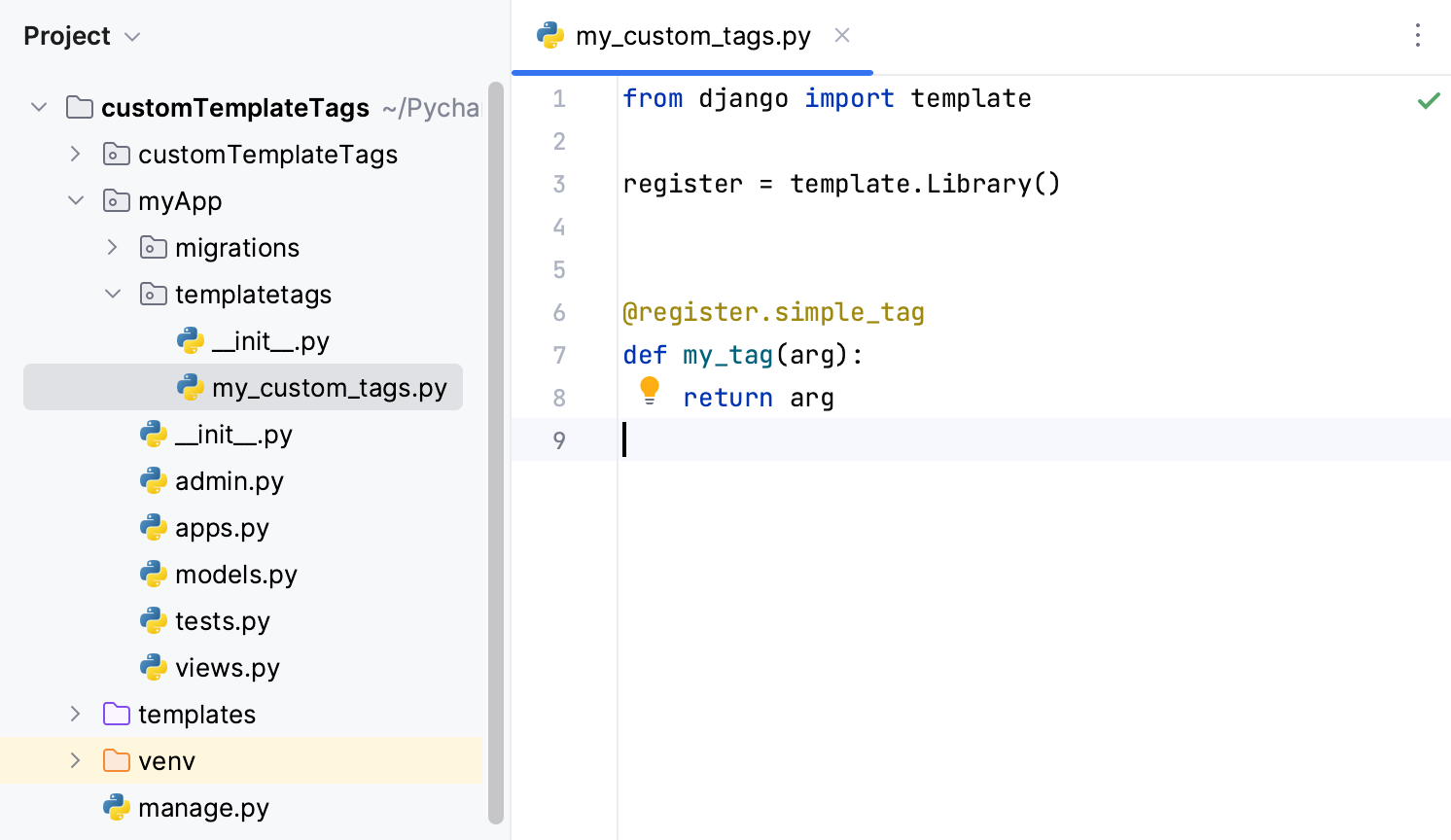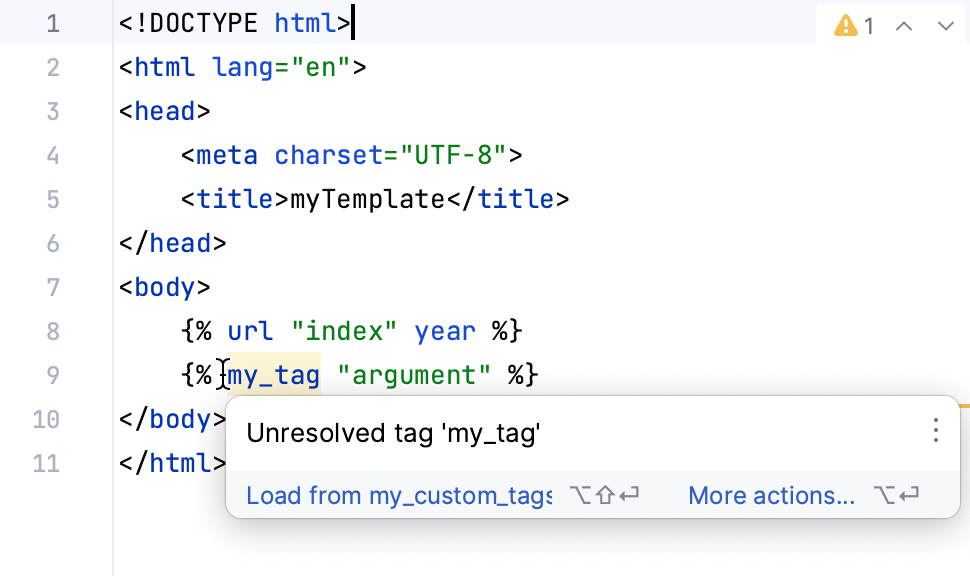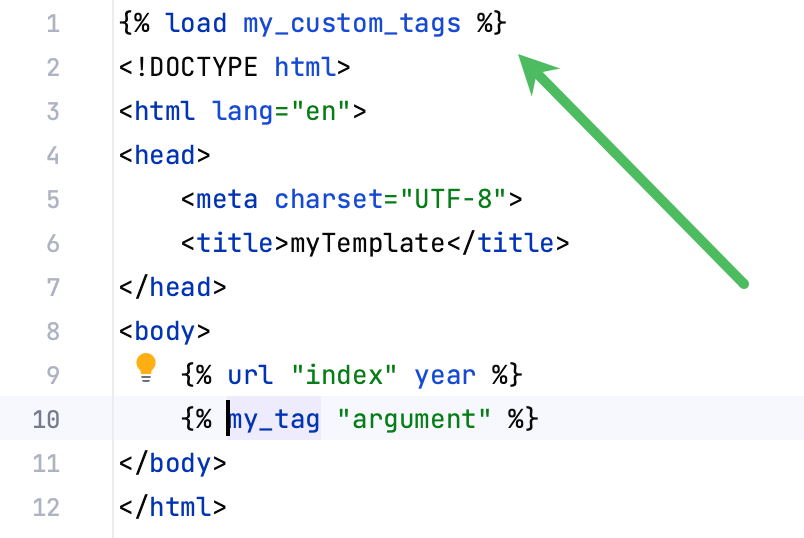Create and use custom template tags
With Django you can set up a new tag to introduce a functionality that is not covered by the built-in template tags. IntelliJ IDEA provides you with corresponding code and navigation assistance.
Under the application directory, create the templatetags package (it should contain the __init__.py file). For example, Django
/DjangoApp ./templatetags In the templatetags package, create a .py file, for example my_custom_tags, and add some code to it to declare a custom tag.
For more information about custom template tags coding practices, refer to Django documentation.

Open you template file in the editor and add the corresponding template tag to it.

IntelliJ IDEA displays the
Unresolved taginspection error because you have not loaded the custom tag into the template file.Use a quick-fix to resolve the missing reference. Place the caret at the custom tag name, press AltEnter, and select the file to load.

IntelliJ IDEA adds the
{% load %}tag to the template file to fix the reference.
IntelliJ IDEA also recognizes custom template tags that are recorded as builtins tags in the TEMPLATES section of the settings.py file.

Once you record a custom tag in the settings file, you can navigate to the file with its declaration. Place the caret at the template tag filename and press Ctrl0B.
Thanks for your feedback!